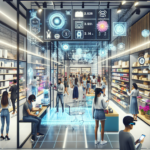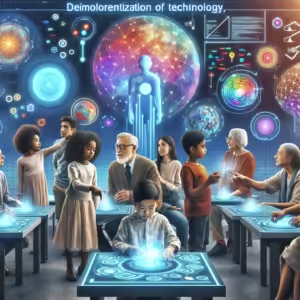Revolutionizing Shopping: Embracing the Smarter Experience
In the rapidly evolving landscape of retail, consumers are no longer satisfied with traditional shopping experiences. As we edge into 2024, the demand for smarter, more intuitive shopping experiences is louder than ever. Recent studies highlight that over half of all consumers are now advocating for enhanced smart shopping solutions. Retailers find themselves at a pivotal juncture where integrating cutting-edge technology with their business models isn’t just a luxury—it’s a necessity.
The Rise of Smart Shopping
The concept of smart shopping revolves around using technology to streamline and personalize the shopping experience. With rapid advancements in AI, machine learning, and big data analytics, retailers have the tools to redefine how they engage with customers. Consumers now expect:
Seamless integration of online and offline shopping.
Highly personalized product recommendations.
Simplified payment and checkout processes.
Faster delivery and pick-up options.
Technological Innovations Driving Change
To meet these rising expectations, retailers are turning to a variety of technological innovations:
Artificial Intelligence (AI): AI is becoming an essential component in understanding consumer behavior and preferences. By analyzing past shopping habits, AI can provide personalized recommendations and even predict future purchases.
Augmented Reality (AR): AR allows consumers to visualize products in their own space before making a purchase. Whether trying on clothes virtually or seeing how furniture fits in a room, AR enhances the decision-making process.
Internet of Things (IoT): IoT connects physical store environments to online platforms, offering a more integrated shopping experience. Smart shelves, for example, can update inventory in real-time and provide valuable data on shopping behaviors.
Consumer Expectations in the Modern Retail Environment
Today’s consumers are digital natives who demand immediacy and efficiency. They are well informed and expect the following:
Personalization: A one-size-fits-all approach no longer works. Shoppers appreciate tailored experiences that cater to their individual preferences and needs.
Efficiency: The rise of the “buy now, want now” mentality demands quick solutions. Whether it’s fast delivery or easy checkout options, efficiency stands at the core of consumer expectations.
Authenticity and Trust: In an era where digital scams are rampant, consumers seek authenticity and trust in their shopping experiences. This means transparent policies, genuine customer reviews, and reliable customer service.
Transforming the Retail Landscape
Retailers must adapt to these shifting dynamics or risk falling behind. Many are leveraging technology to transform the retail landscape:
Utilizing big data analytics to gain insights into consumer behavior, allowing for more strategic decision-making.
Implementing blockchain technology to ensure secure and transparent transactions.
Enhancing mobile commerce platforms to cater to the increasing number of mobile-first consumers.
Challenges in Creating Smart Shopping Experiences
While the benefits of adopting smart technologies are clear, retailers face several challenges in this transition:
Integration Costs: Introducing new technology can be expensive. For many small to mid-sized retailers, the cost of integrating AI or AR can be prohibitive.
Data Privacy Concerns: As retailers collect more data to personalize experiences, they must address growing consumer worries about privacy and data security.
Technology Adoption: Retailers must ensure that both employees and customers can effectively use and benefit from the new technologies. This requires ongoing training and support.
Strategies for Retailers
To overcome these challenges, retailers can employ several strategies:
Partnering with tech firms: Collaborations can provide access to advanced technologies without the need for significant upfront investment.
Ensuring transparency: Clear communication about how consumer data is used can build trust and alleviate privacy concerns.
Investing in training: Equipping employees with the necessary skills ensures a smoother transition and better customer service.
The Future of Retail: Embracing Change
The future of retail lies in embracing change and leveraging technology to meet consumer demands. The integration of smart technologies promises not only to enhance the shopping experience but also to open up new opportunities for growth and innovation. Successful retailers will be those who can adapt quickly and sustainably to these changes, ensuring that they remain at the forefront of the industry.
Conclusion: Meeting the Demand for Smarter Shopping Experiences
As we move further into 2024, the demand for superior shopping experiences continues to grow. By embracing cutting-edge technologies and responding to consumer expectations, retailers can transform their offerings and remain competitive in this dynamic market. Investing in smart shopping experiences not only meets consumer demands but also builds a foundation for long-term success in the ever-evolving world of retail.








